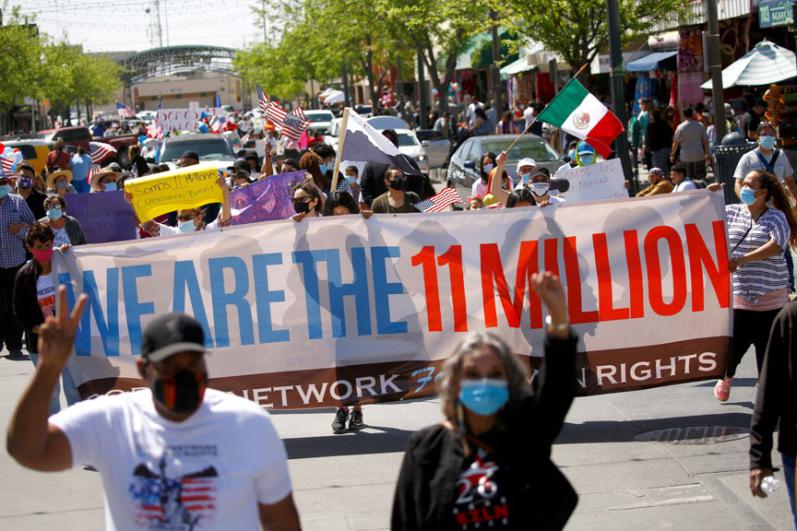Getting to know the migrants with whom we are walking
In our national immigration debate, misinformation about immigrants is abundant, as they are often characterized in a negative light. But they are human beings with aspirations just like the rest of us. It is important to know who immigrants are and how they contribute to our society -- to know with whom we are walking.
There are almost 45 million immigrants in the United States. At 13 percent of our population, this is at the highest levels since 1890 when it was almost 15 percent. Those who are undocumented among this group, meaning they have no official legal status in the U.S., are approximately 20.8 percent.
When we look at the total immigrant population, just over 45 percent have already attained American citizenship. Some see this as a threat to our democracy because 14 percent of U.S. citizens are not native-born, but the truth is that immigrants have made a significant contribution to our society in the past, as they do in the present.
The new immigrants are well-integrated into our society and into the labor force. About 65 percent of all immigrants are in the labor force, mostly in essential jobs, such as agriculture, construction, and service. Among the undocumented, labor force participation is as high as 94 percent.
The percentage of American-born children in immigrant families is about 25 percent of the U.S. births in any given year. Over 50 percent live in California, Texas, Florida, New York, and Illinois, but immigrants are found in every state.
During the recent pandemic, we learned firsthand about the necessity of so-called essential jobs, as immigrants helped keep the economy going in many industries. It showed how our society can hardly exist without them.
Health care workers, grocery store employees, agricultural workers, and so many other occupations are truly essential to the well-being of the American population. These are essential functions of our society.
Some, however, worry about the displacement of American-born workers by foreign workers, but immigrant workers largely complement the American workforce -- working in jobs that Americans may not want -- except perhaps where they compete with high school dropouts.
Hispanic immigrants are the largest percentage of new immigrants, which includes those who might be undocumented. A closer look at this group gives us a better indication of their integration into and contributions to our society.
The total Hispanic population in the U.S. is about 62.5 million, which is about 19 percent of the total U.S. population, with Mexicans making up about 60 percent of the population. The Mexican percentage of the population is decreasing mostly because of less immigration from and more emigration (or return) to Mexico. The nationalities that are increasing in the U.S. are Venezuela and Central American countries.
Texas, California and Florida saw their Hispanic populations increase by more than one million people from 2010 to 2020, but there is a significant number of Hispanic immigrants in every state.
English language acquisition has also grown for all Hispanics, especially among U.S.-born children. This is another significant factor in immigrant integration as the educational achievement levels have also continually grown as more immigrant Hispanics come with higher levels of education, then continue their education once in the U.S. Almost half of the undocumented immigrants ages 25 to 64 have at least a high school education.
This demographic and statistical review of our immigrant population in the U.S. perhaps will open our minds a bit to the essential function that immigrants play in our society today. By and large, they contribute to our economy and culture, and successfully integrate into our society. Sometimes the facts can cancel out the prejudices and impressions that are created through misinformation and nativism, which continue to plague our nation.
- Bishop Nicholas DiMarzio is retired bishop of the Diocese of Brooklyn, N.Y. He writes the column "Walking With Migrants" for Catholic News Service and The Tablet.


















